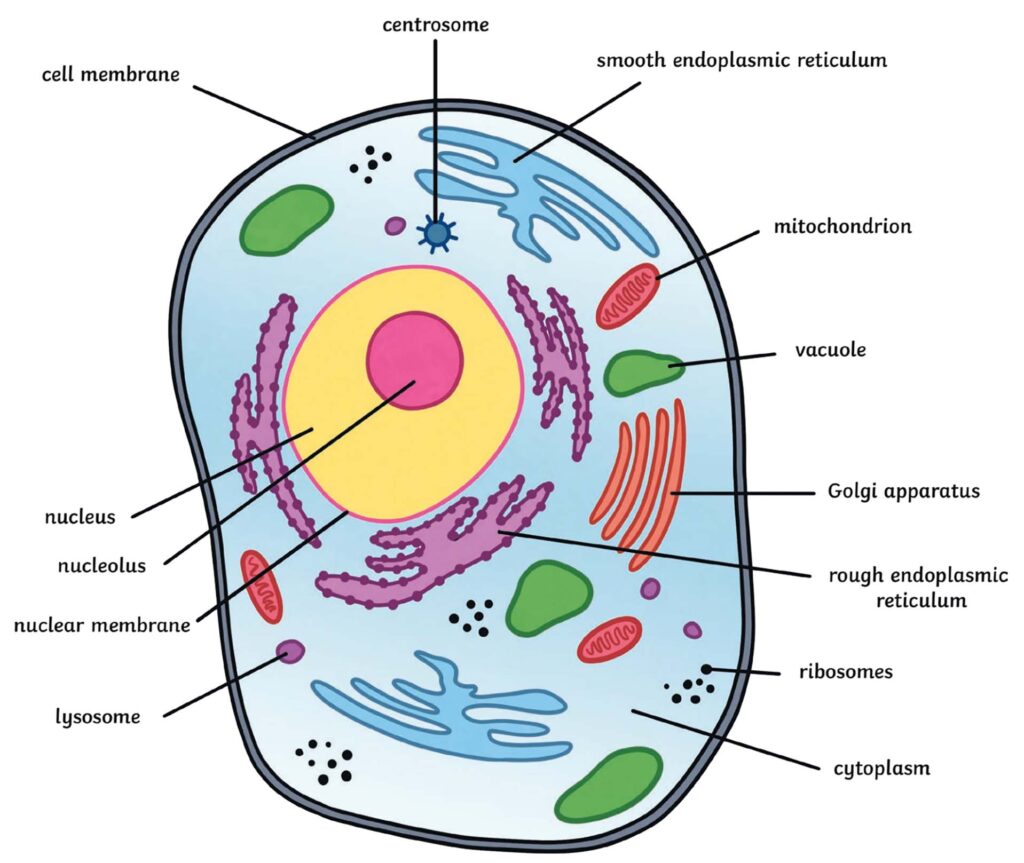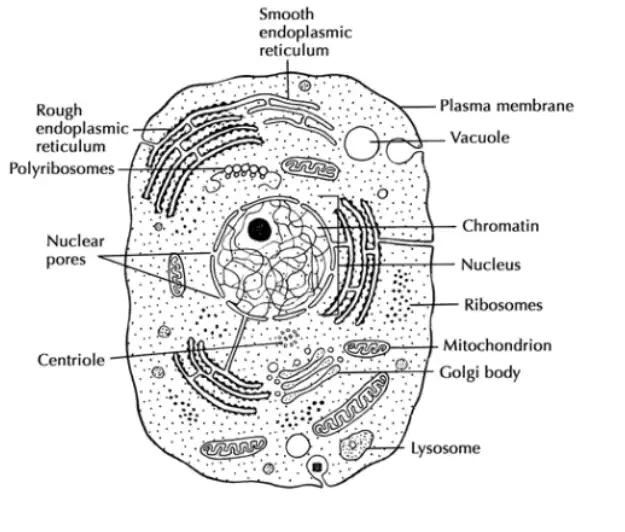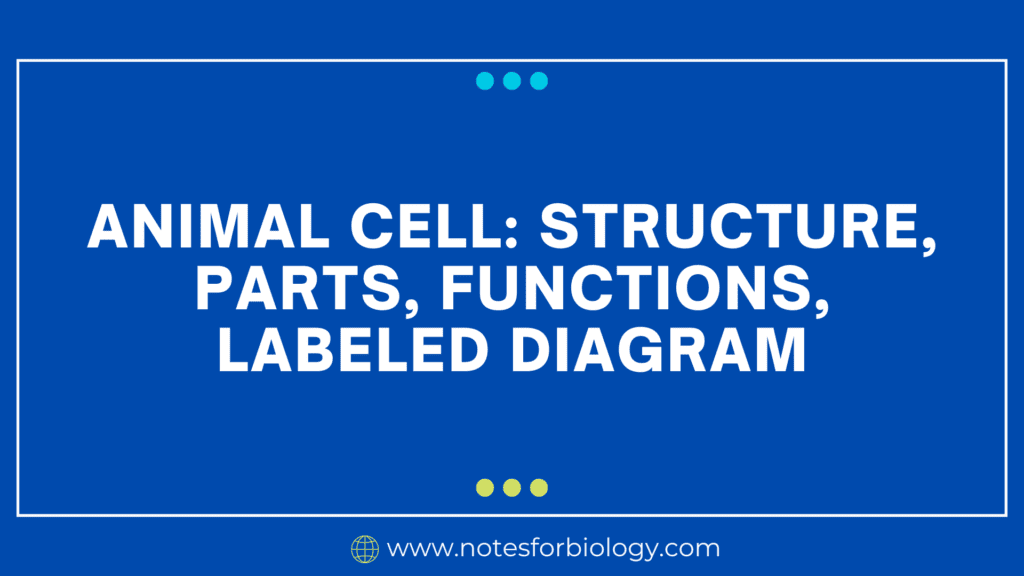A eukaryotic cell without a cell wall that is surrounded by the plasma membrane is called an Animal cell. The plasma membrane encloses all of the cell’s organelles, including the nucleus. Plant cells contain a cell wall, in contrast to animal cells that have not.
Table of Contents
It can be anywhere in size from a few millimeters to a few tiny microns. The ostrich egg, which has a diameter of more than 5.1 inches and a weight of almost 1.4 kg, is the largest known animal cell. The neuron in the human body, on the other hand, is only 100 microns across.
It also differ in shape; some are flat, while others are oval or rod-shaped. More interesting shapes are those that are concave, spherical, curved, and rectangular. The majority of the cells are so little that they are only visible through a microscope.

As previously mentioned, they are eukaryotic cells with a nucleus that is membrane-bound. Moreover, the nucleus of these cells displays the presence of DNA. They also consist of several membrane-bound organelles and cellular structures that perform particular tasks required for a cell to operate correctly.
Structure
- Ultra-thin semi-permeable film.
- It has a lipid content that creates a semi-permeable barrier between the cell and its surroundings.
- It contains a small amount of protein.
- It is extremely constant in the cell.
- The plasma membrane is present in every live cell.
Parts of Animal Cell
1. Cell Membrane:
A thin, semipermeable protein-and lipid-based membrane layer that envelops the cell. Its main function is to shield the cell from its environment. It also regulates the movement of other microscopic organisms and nutrients into and out of the cell. Cell membranes are hence referred to as semi-permeable or selectively permeable membranes.
2. Nucleus:
It is an organelle that is home to a number of different sub-organelles, including chromatins, nucleosomes, and nucleoli. DNA and other genetic elements are also present.

3. Nuclear Membrane:
Around the nucleus lies a double-membrane structure. Another name for it is the nuclear envelope.
4. Centromes:
It is a tiny organelle that is located close to the nucleus and features tubules that radiate out from a thick center. Microtubules are made inside the centrosomes.
5. Lysosome:
These are spherical, membrane-enclosed organelles that contain digestive enzymes that aid in excretion, digestion, and the process of cell renewal.
6. Cytoplasm:
A substance that resembles jelly that is encased in the cell membrane, holding all of the organelles. Nucleoplasm is the material that is present inside the nuclear membrane-enclosed cell nucleus.
7. Mitochondria:
They are double-membraned, spherical or rod-shaped organelles. They are a cell’s powerhouse since they are crucial in the release of energy.
8. Ribosome:
They are tiny organelles where protein synthesis takes place. They are composed of cytoplasmic granules that are rich in RNA.
9. ER, or endoplasmic reticulum:
This organelle is made up of a thin network of membrane sacs that branch out from the nucleus.
10. Vacuous:
An internal membrane-bound organelle that helps a cell keep its form and store materials including food, water, waste, and other materials.
11. Nucleopore:
The passage of proteins and nucleic acids across the nuclear membrane is facilitated by these microscopic holes in the membrane.
12. Golgi Apparatus:
An organelle that resembles a sac and is flat, smooth, and has layers. It is situated close to the nucleus and is used in the production, storing, packing, and movement of particles inside the cell.
Functions of Animal Cell
- To enclose and safeguard the cell’s contents
- To control the chemicals that cross the plasma membrane and enter and exit cells. Consequently, it manages homeostasis.
- Materials are actively transported across the membrane by the proteins.
- Carbohydrates (sugars and sugar chains), which adorn both the proteins and lipids and aid in cell recognition, and proteins and lipids enable communication between cells.
Points to be noted:
The structural and functional building block of life is the cell. Because these cells must perform particular tasks, they vary in size, shape, and structure. Since both plant and animal cells are eukaryotic, they have certain characteristics in common.
They are different, though, because animals have to change to live more active, non-sedentary lives. Moreover, since animals must obtain their own nourishment, they are devoid of specialized cell organelles like chloroplasts.
Frequently Asked Questions(FAQ)
What is an animal cell?
An animal cell is a type of cell that is only found in animal tissues, as the name suggests. It is distinguished by having cell organelles encased in the cell membrane and lacking a cell wall.
Which cell organelle is responsible for the generation of energy for cellular activities?
Mitochondria
What is the role of lysosomes?
Lysosomes support the processes of digestion, excretion, and cell regeneration.
Explain how an animal cell varies from a plant cell.
Animal cells typically have a rounded, uneven form. The main cause of this is because plant cells lack the cell wall, which is one of their distinguishing characteristics. Moreover, because animals are not autotrophs, animal cells lack plastids.
Related Article

